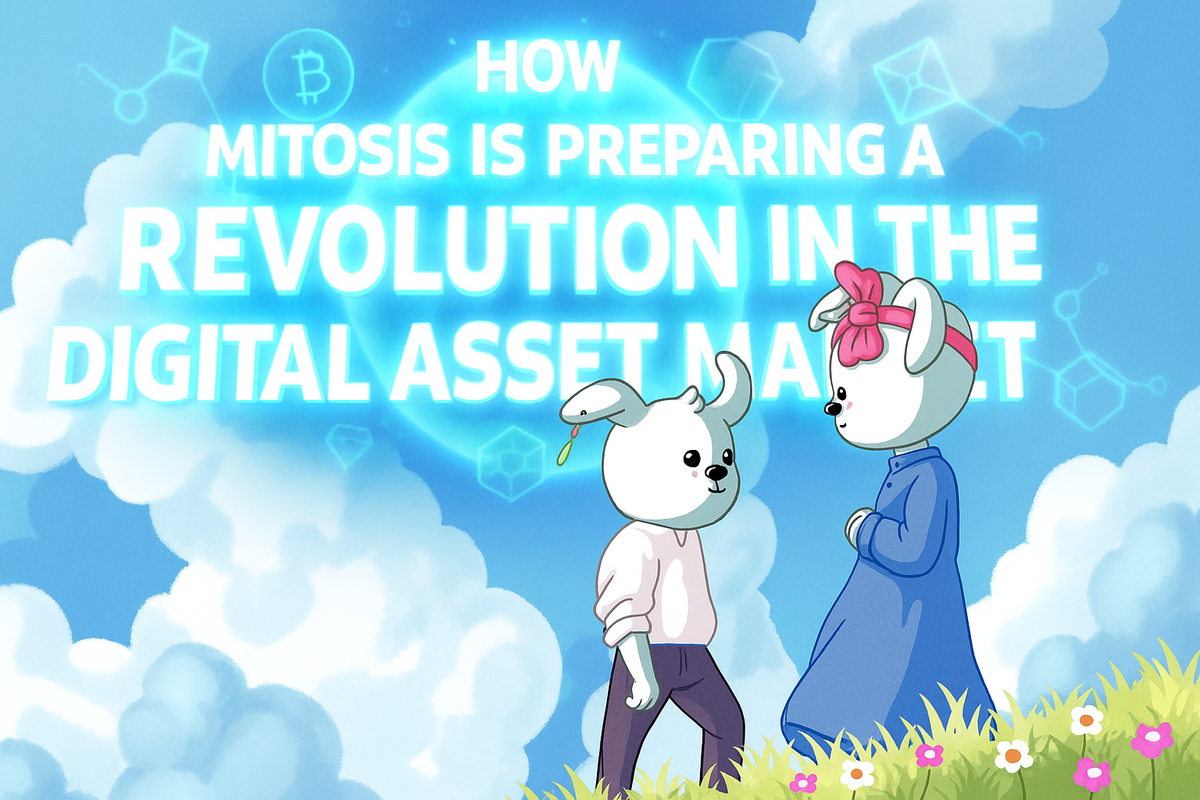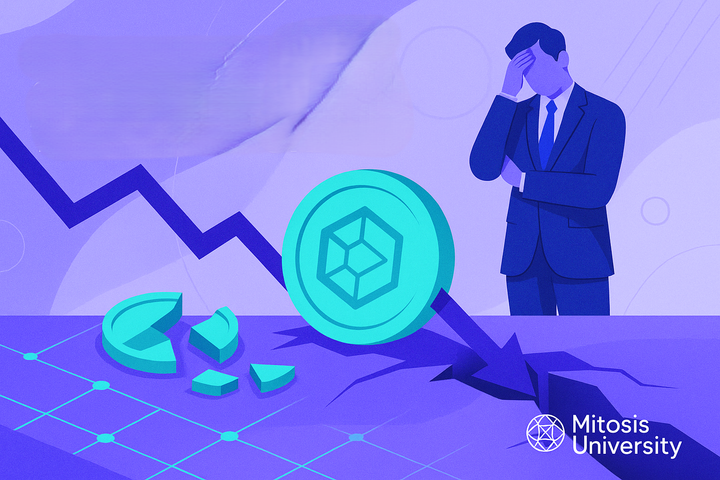NFTs Without Borders: How Mitosis is Preparing a Revolution in the Digital Asset Market

1. Introduction: The NFT Boom and Its Multichain Limitations
Non-Fungible Tokens (NFTs) have exploded into the worlds of digital art, gaming, collectibles, and even property rights. From pixelated punks and bored apes to unique in-game items and tokenized event tickets, NFTs have demonstrated incredible potential for representing unique digital (and sometimes physical) value. This market has attracted millions of users and billions of dollars in investment, spawning an entirely new economy.
However, like many other aspects of Web3, the NFT world quickly encountered the problem of fragmentation, caused by the existence of multiple blockchains:
- Collections on Different Islands: A popular NFT collection might be launched on Ethereum, a promising gaming project with its NFTs on Polygon or Solana, and niche digital art on Tezos or another specialized blockchain.
- Isolated Marketplaces: Major NFT marketplaces often support only one or a few networks, forcing users to switch between platforms to find or sell desired assets.
- Complexity for Collectors and Traders: To build a diversified NFT portfolio or find the best prices, collectors have to manage wallets on different networks, deal with various token standards, and pay fees for transfers via bridges (if even possible for a specific NFT).
- Limited Utility: An NFT locked into one network has limited utility. For example, an in-game item from a game on blockchain A cannot be used or recognized in a game on blockchain B.
This fragmentation creates barriers to the NFT market's growth, reduces its efficiency, and complicates life for both creators and users. Imagine if a Picasso painting could only be exhibited in one gallery in the world, or a rare collectible stamp could only be sold in one country – this would significantly reduce their value and accessibility.
Mitosis: Uniting the World of Digital Treasures
What if there was a way to securely and efficiently move NFTs between different blockchains, creating a single, global space for digital assets? This is precisely the capability Mitosis aims to provide.
Mitosis, a liquidity protocol initially focused on the seamless movement of fungible tokens, possesses all the necessary qualities to become key infrastructure for cross-chain NFTs as well:
- Secure Transport: Using advanced mechanisms like EigenLayer AVS, Mitosis can ensure the reliable transfer of NFT ownership data between networks.
- Standardization (Potentially): Mitosis could facilitate the adoption or development of standards for "wrapped" or "bridged" NFTs that would be easily recognizable across different ecosystems.
- Infrastructure for Marketplaces and dApps: Provide developers of NFT marketplaces and Web3 applications with tools to integrate cross-chain functionality.
What Will You Learn From This Article?
In this article, we will explore in detail how Mitosis can revolutionize the NFT market by solving its current fragmentation problems:
- What specific technical and economic challenges do cross-chain NFTs face?
- How can Mitosis's architecture (including security and the EOL model) be adapted or utilized to support non-fungible tokens?
- What new opportunities open up for creators, collectors, gamers, and developers thanks to cross-chain NFTs powered by Mitosis?
- Examples of future scenarios: from unified NFT marketplaces to cross-chain gaming utility.
We will show that Mitosis is not just about liquidity for DeFi, but also about creating a truly global and interconnected market for the entire spectrum of digital assets, including the unique and non-fungible treasures of Web3.
2. Mitosis in Action: Opening New Horizons for NFTs
We've identified the fragmentation problems in the NFT market and outlined Mitosis's potential as a unifying infrastructure. Now let's examine how specific Mitosis mechanisms can be applied to support cross-chain NFTs and what innovative scenarios this unlocks.
Technical Aspects of Cross-Chain NFT Movement via Mitosis
Moving NFTs between networks is technically more complex than moving fungible tokens (like ERC-20s). Each NFT is unique and carries specific metadata (image, attributes, etc.). How can Mitosis handle this task?
- "Lock-and-Mint" Model for NFTs (with Enhancements):
- Principle: The original NFT is locked in a smart contract on the source network. On the destination network, a "wrapped" or "representative" version of this NFT is minted, which references the original.
- Role of Mitosis:
- Secure Message Passing: Mitosis, using its secure messaging infrastructure (e.g., Hyperlane + EigenLayer AVS), ensures the reliable transfer of information that the original NFT has been locked and that its representative can be safely minted on another network (and vice versa for a return transfer – that the representative has been burned and the original can be unlocked).
- Standardization of Representative NFTs: Mitosis can promote the development or support of standards for such "wrapped" NFTs so they display correctly and interact with marketplaces and dApps on destination networks.
- Potential Use of EOL for NFT Operations:
- While EOL is primarily focused on fungible tokens, its principles can be adapted. For example, the Mitosis Treasury could hold popular fungible tokens (stablecoins, ETH) that can be used to facilitate cross-chain NFT-to-token swaps. If a user wants to sell an NFT from network A for USDC on network B, Mitosis EOL could provide USDC liquidity on network B while the NFT is transferred or its ownership is relayed via a secure channel.
New Opportunities and Use Cases for Cross-Chain NFTs with Mitosis
The integration of Mitosis into the NFT ecosystem can spawn numerous innovations:
- Unified Cross-Chain NFT Marketplaces:
- The Problem: Users have to browse dozens of marketplaces on different networks.
- Solution with Mitosis: Marketplaces will be able to aggregate NFT listings from various blockchains. A user could buy an NFT minted on Solana using their ETH on Ethereum, and Mitosis would handle the secure exchange and ownership transfer "under the hood." This would create a truly global market for NFTs.
- Cross-Chain Gaming Utility (GameFi):
- The Problem: In-game items and characters (NFTs) are locked into a single game or appchain.
- Solution with Mitosis:
- Asset Transfer Between Games/Worlds: A player could move their rare NFT sword from game A (on appchain X) to game B (on appchain Y), where this sword might gain new properties or simply be usable.
- Trading on External Platforms: In-game NFTs could be easily withdrawn to main L1s (e.g., Ethereum) for sale on major marketplaces to a broader audience.
- Cross-Chain NFT Collateralization in DeFi:
- The Problem: It's difficult to use a valuable NFT from one network as collateral for a loan in a DeFi protocol on another network.
- Solution with Mitosis: A user could lock their NFT (e.g., a CryptoPunk on Ethereum) and receive confirmation of this lock on another network (e.g., Arbitrum) via Mitosis. This would allow it to be used as collateral in a lending protocol on Arbitrum.
- Global Loyalty and Membership Programs Based on NFTs:
- The Problem: NFT passes or membership tokens are limited to a single ecosystem.
- Solution with Mitosis: A brand could issue an NFT for its loyalty program on one network, and users could present or use the benefits of this NFT in partner applications or services on entirely different blockchains, thanks to the ability to verify ownership via Mitosis.
- Improved Experience for NFT Creators:
- Choosing the Optimal Minting Network: Creators will be able to choose the network for the initial minting of their NFTs based on its cost, speed, or specific features, knowing that their creations will not be isolated and can reach audiences on other networks thanks to Mitosis.
Conclusion: Mitosis – Unleashing the Potential of Non-Fungible Assets
Fragmentation is the main enemy of liquidity and utility for both fungible and non-fungible tokens. Mitosis, by offering secure and efficient infrastructure for cross-chain interaction, has the potential to become a key solution for unifying the disparate islands of the NFT economy.
By building bridges for NFTs, Mitosis doesn't just facilitate their movement. It paves the way for:
- Deeper and more liquid NFT markets.
- New NFT use cases in DeFi, GameFi, and other sectors.
- Improved user experience for collectors, gamers, and creators.
- True globalization of the digital asset market.
As the NFT world continues to grow and evolve, the need for reliable cross-chain solutions will only intensify. And Mitosis is ready to play its part in building a future where your unique digital treasures can travel freely across the entire Web3 universe, knowing no borders.
Learn more about Mitosis:
- Explore details on the official website: https://www.mitosis.org/
- Follow announcements on Twitter: https://twitter.com/MitosisOrg
- Participate in discussions on Discord: https://discord.com/invite/mitosis
- Read articles and updates on Medium: https://medium.com/mitosisorg
- Blog: https://blog.mitosis.org/


Comments ()